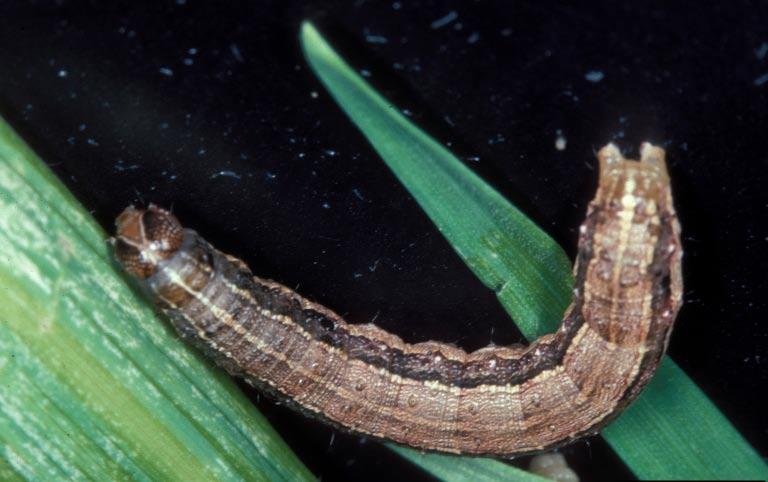
3 minute read
INSECTindex
2021: The Year of the Insect Plagues
By Carol Allen
If 2020 is infamous for the COVID-19 pandemic, 2021 seems to be the year for insect plagues for the Mid-Atlantic region. Almost everyone weathered the Brood X cicadas without too many losses of trees or shrubs. This 17-year wonder was heralded by lots of press, and they were a sight to behold. Videos of piles of cicada carcasses made the nightly news and there were even interviews with dog owners about their canines’ cicada dining habits. In their aftermath, came the oak mites that fed on the cicada larvae and in turn, the mite populations flourished. They rained down on unsuspecting humans, causing weeks of itchy misery from their bites. Many people are very glad that is over. Then the third plague hit. The outer suburbs around Washington, DC, are known for their abundance of spring azaleas and the flowing, green lawns surrounding McMansions. That was where the latest insect plague hit—right in the tall fescue! The fall armyworm (Spodoptera frugiperda) is a pest native to the warm to tropical regions of North and South America. With several generations per year, the moth’s ability to fly strongly for several miles The insect cannot over-winter in this area, so one generation per year is typical. However, due to the late frost, a second generation was reported throughout the Mid-Atlantic. Unfortunately, the fall armyworm has shown to be resistant to some of the typical insecticides used to control this pest. At this time of year, the larvae have already pupated and will die with the cold weather, so no pesticide is needed. For those folks with damaged lawns, it is already past the time to renovate and overseed for this year. Plan on overseeding in the spring, but you may not be able to apply a crab-grass preventer if you do. If the damaged area is manageable, consider preparing the soil and applying sod through the month of November. As we go to press, it seems the warmer weather has initiated another insect wave; this time, a bumper crop of Asiatic lady beetles. These alien, but beneficial, insects normally try to overwinter in a protected area. That area is often inside your house. Now is not too late to check screens and repair any that are damaged, as well as caulking windows and cracks in walls to keep them out. Consider using any days of milder fall weather to do this house maintenance. It will cut down on your heating bill as well. If you have the lady beetles inside, gently remove them to the out-of-doors. They are wonderful predators in our gardens. o
and with the help of storm winds moving from south to north, they can be visitors to as far north as Ottawa. They usually hit our area in late July to early August, and are typically an issue with agricultural crops and hay fields. To the dismay of both homeowner and turf farmer, they also happily feed on turf grass. The moths lay their eggs on their preferred host or nearby. The eggs hatch in just a few days and the larvae feed for about 16 days in the summer and go through six larval stages. It is in the last three stages that the feeding becomes voracious and turf damage becomes very noticeable. Suddenly, homeowners were noticing that large areas, sometimes even the entire lawns, had turned brown. Close examination revealed large numbers of brown-ish worms, decorated with raised black dots and lighter stripes running the length of their inch-long bodies. Heavy infestations had more than three to four worms per square foot of turf.
Carol Allen describes herself as a committable plant-aholic. She has more than 25 years’ experience in the horticulture industry, with a special interest in plant pests and diseases; is a Licensed Pesticide Applicator in the state of Maryland; and is an ISA-Certified Arborist. She can be contacted at carolallen@erols.
com.
Fall Armyworm photo by Frank Peairs, Colorado State University, Bugwood.org; CC BY 3.0 US, via Wikimedia Commons.
Asian Lady Beetle photo by Melissa McMasters from Memphis, TN, United States, CC BY 2.0, via Wikimedia Commons.









